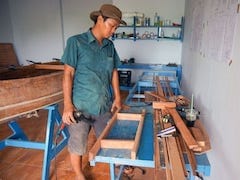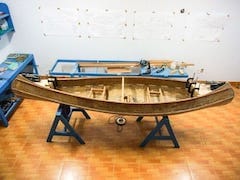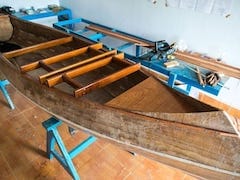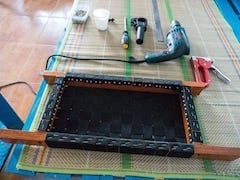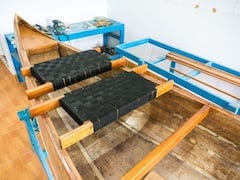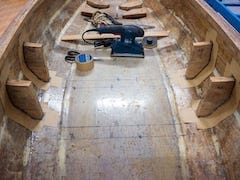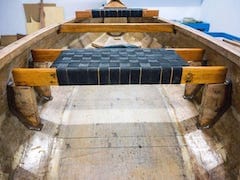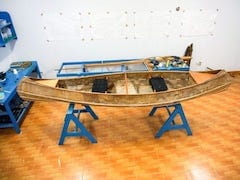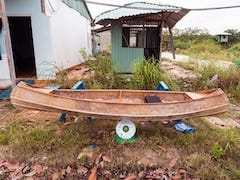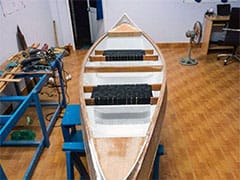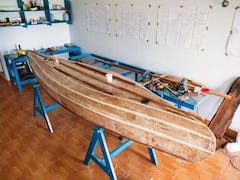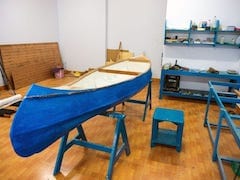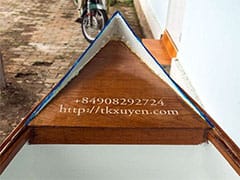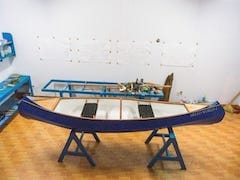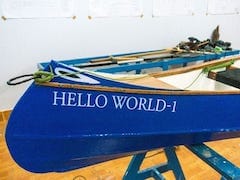 ll preparations is almost finished, to “lay the keel” and start the building of Hello World – 3, my next boat, a Nick Schade designed, 18 feet (5.55 m) S&G Night Heron sea kayak. Many would ask why building another boat, while I’ve already had the Hello World – 1 & 2. Actually, HW – 1 is just a simple, slow canoe for poking around, HW – 2 is a recreational kayak suitable only for short trips, as proved in my last paddling to Vũng Tàu in June this year.
ll preparations is almost finished, to “lay the keel” and start the building of Hello World – 3, my next boat, a Nick Schade designed, 18 feet (5.55 m) S&G Night Heron sea kayak. Many would ask why building another boat, while I’ve already had the Hello World – 1 & 2. Actually, HW – 1 is just a simple, slow canoe for poking around, HW – 2 is a recreational kayak suitable only for short trips, as proved in my last paddling to Vũng Tàu in June this year.
First, consider some facts, many of Vietnam islands are around 100 km off from shore. Phú Quý island is about 85 km from Mũi Né, Phan Thiết; Phú Quốc island is 110 km from Rạch Giá, Hà Tiên; Thổ Chu island is another 100 km from the southern most point of Phú Quốc; Côn Đảo island is about 95 km from Hậu Giang estuary, Sóc Trăng; Bạch Long Vỹ island is also 100 km from Cát Bà, Hải Phòng… Some are nearer such as: Cồn Cỏ, Chàm, Lý Sơn islands… all around 30 km.
Second, consider some other facts. If your sustained paddling speed is around 5 ~ 6 kmph, it’s not really possible to reach those islands, at least with a coastal – cruising small kayak which is, by design, not suited for multi – days sea crossing without resting, 14 ~ 16 hours of continuous paddling is almost the upper limit for an average man like me, after which you would need a good sleep to recover. Obviously a boat capable of sustaining 8 ~ 9 kmph and beyond is very much needed.
Third, is the target of 100 ~ 110 km in 24 hours really feasible!? The answer is: ça dépend!
It depends on too many things: the weather, the wind, waves, the current, the temperature, all of the unknown factors. And for the known factors: your boat, your equipments, your physical preparation, your planning and strategy… all need to be the – very – best – of – class to push the limits and reach the target. That’s why I would invest lots of time and efforts into the building of this HW – 3 kayak.

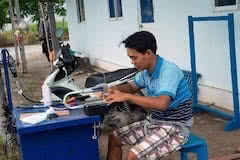
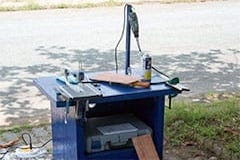
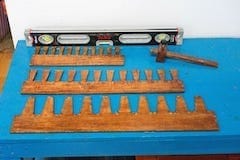
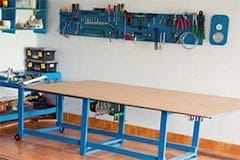
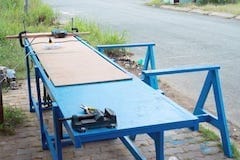
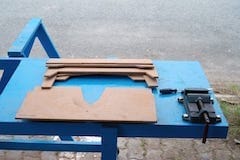
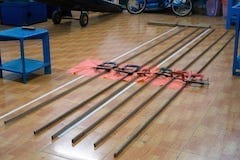
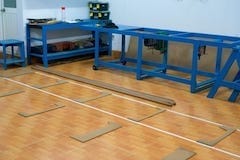
 ay after day, I gradually… felt in love with my new kayak 😀. Although quite sturdily and heavily built (around 32 kg), it behaves well on water. The longer and thiner hull offers much better speed (compared to Hello World – 1), but the most important thing is that the hull shape provides and maintains sufficient “kinetic energy” for the boat to make sustainable headway into unfavorable winds and waves!
ay after day, I gradually… felt in love with my new kayak 😀. Although quite sturdily and heavily built (around 32 kg), it behaves well on water. The longer and thiner hull offers much better speed (compared to Hello World – 1), but the most important thing is that the hull shape provides and maintains sufficient “kinetic energy” for the boat to make sustainable headway into unfavorable winds and waves!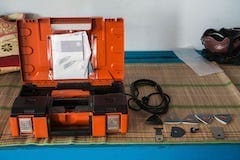
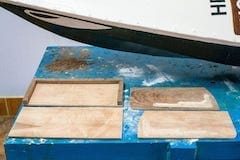
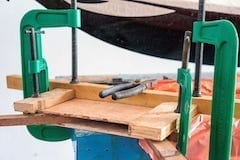
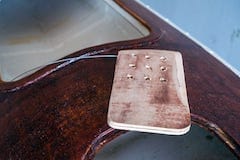
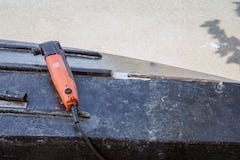
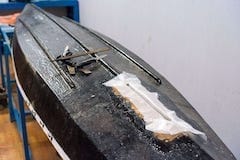
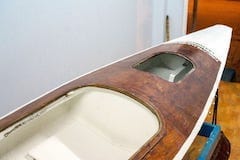
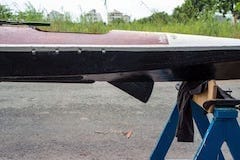
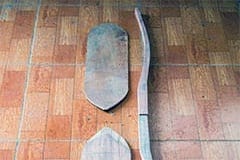
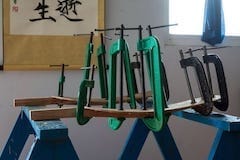
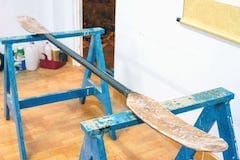
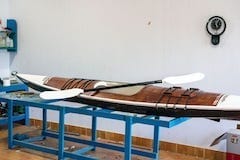
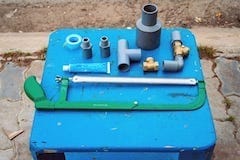
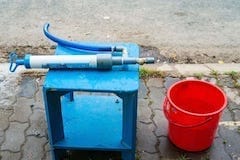
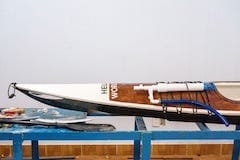
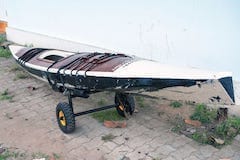
 ow “operating two boats” 😀, I could have more ways to play and have fun with them. Usually, me and one of my friend, each of us would go on a separate canoe / kayak, then exchange them at the midpoint of a paddling trip. It’s extremely hot out there this season, 35° ~ 39° Celsius, but that’s good for our endurence anyhow.
ow “operating two boats” 😀, I could have more ways to play and have fun with them. Usually, me and one of my friend, each of us would go on a separate canoe / kayak, then exchange them at the midpoint of a paddling trip. It’s extremely hot out there this season, 35° ~ 39° Celsius, but that’s good for our endurence anyhow.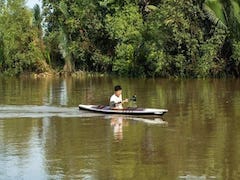
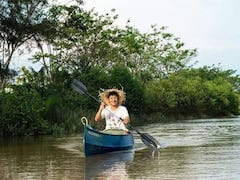
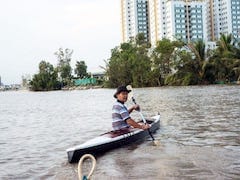
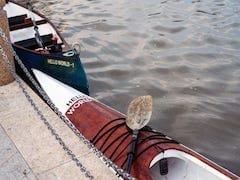
 aunched and trialled the kayak this April fool day! Can’t say how much I’m pleased with it, great speed, just like a dart slicing through water! 😀 It could take some time to learn how to handle this new kayak, the experiences are different between my two boats, but I got the right feeling on how to control it very soon.
aunched and trialled the kayak this April fool day! Can’t say how much I’m pleased with it, great speed, just like a dart slicing through water! 😀 It could take some time to learn how to handle this new kayak, the experiences are different between my two boats, but I got the right feeling on how to control it very soon.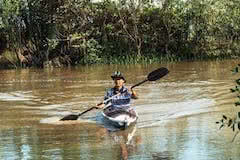
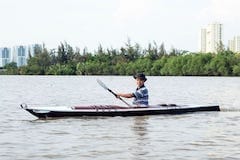

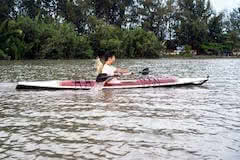
 rom the outlook, she gonna be a nice boat with simple and sporty curves! I proceed slowly and carefully, as I intend to use this boat for white – water (near coastal) areas, where it gonna be rougher and wavier, compared to the almost – calm rivers around Saigon. It need to be ‘engineered’ with a focus on durable & strength! 😀
rom the outlook, she gonna be a nice boat with simple and sporty curves! I proceed slowly and carefully, as I intend to use this boat for white – water (near coastal) areas, where it gonna be rougher and wavier, compared to the almost – calm rivers around Saigon. It need to be ‘engineered’ with a focus on durable & strength! 😀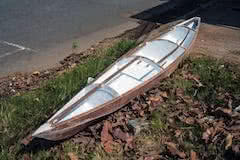
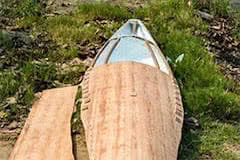
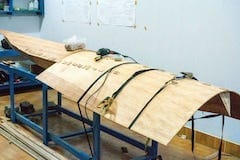
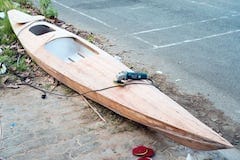
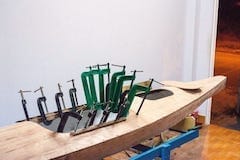
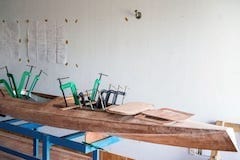
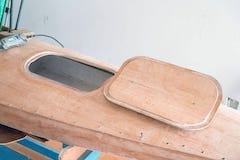
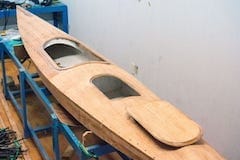
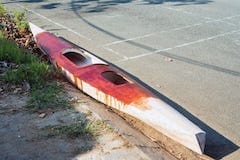
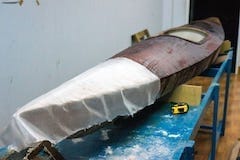
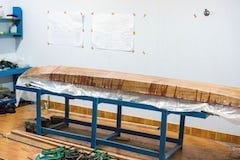
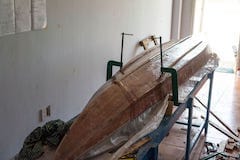
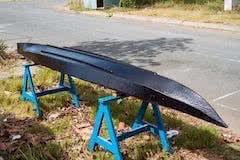
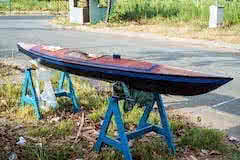
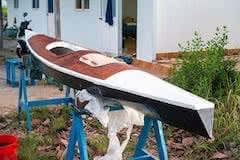
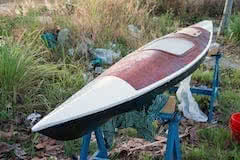
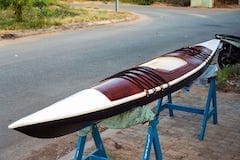
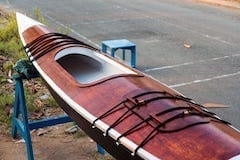
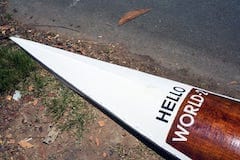
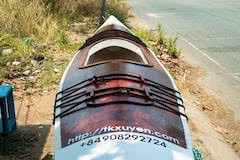
 ix months have passed since I’d started Hello World – 1, my first build, a general purpose canoe. Now it’s time to let this planned Hello World – 2 to say Hello to the world 😀. She gonna be a kayak (of Selway Fisher’s Dart 14′ design), which I hope to have better performance and somewhat better ‘open – water’ capabilities.
ix months have passed since I’d started Hello World – 1, my first build, a general purpose canoe. Now it’s time to let this planned Hello World – 2 to say Hello to the world 😀. She gonna be a kayak (of Selway Fisher’s Dart 14′ design), which I hope to have better performance and somewhat better ‘open – water’ capabilities.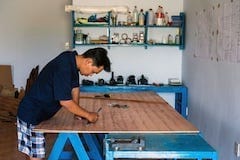
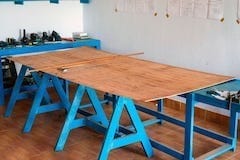
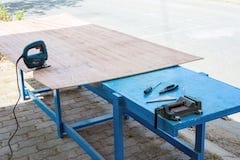
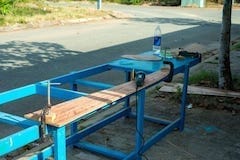
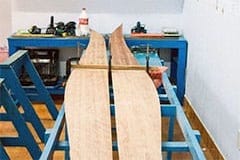
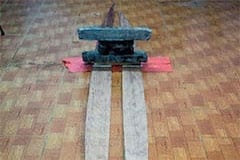
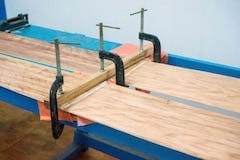
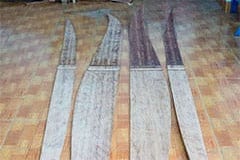
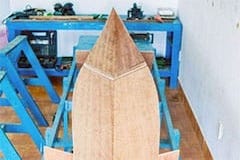
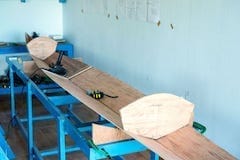
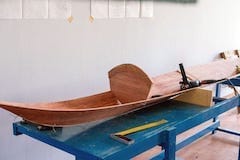
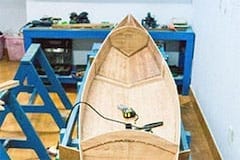
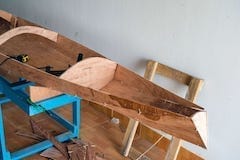
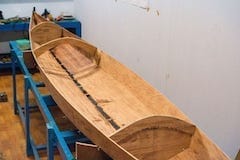
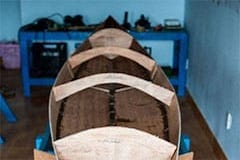
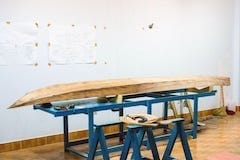
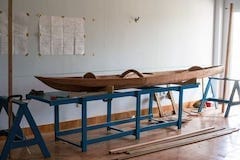
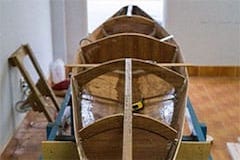
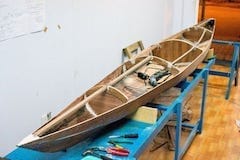
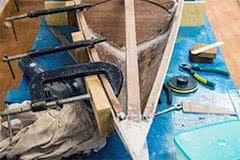
 oating progress has been stagnated lately… But really I’m interested in experimenting with rowing, another way of propelling the boat besides paddling. Rowing can help building other groups of your muscles, it could produce more torque to push the canoe forward under unfavourable wind and current conditions, it should increase sustainable speed significantly, furthermore, it’s good for long – range tandem trips: with two hands aboard, ones can take turn to row and to rest. First, I make a pair of 8 feet oars: 5 planks of wood is glued and screwed together to form the oar’s handle and blade. Next is scraping and planing them into their final shapes using my new, very useful tool: a power planer. Then the 4 feet 8 inches outrigger and flotations.
oating progress has been stagnated lately… But really I’m interested in experimenting with rowing, another way of propelling the boat besides paddling. Rowing can help building other groups of your muscles, it could produce more torque to push the canoe forward under unfavourable wind and current conditions, it should increase sustainable speed significantly, furthermore, it’s good for long – range tandem trips: with two hands aboard, ones can take turn to row and to rest. First, I make a pair of 8 feet oars: 5 planks of wood is glued and screwed together to form the oar’s handle and blade. Next is scraping and planing them into their final shapes using my new, very useful tool: a power planer. Then the 4 feet 8 inches outrigger and flotations.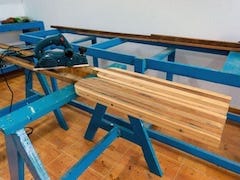
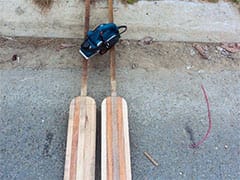
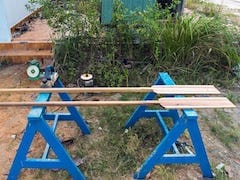
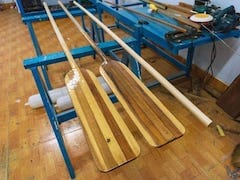
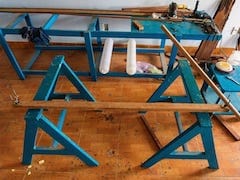
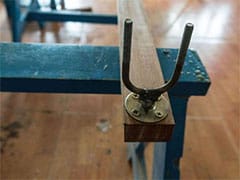
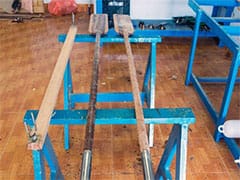
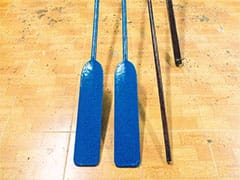
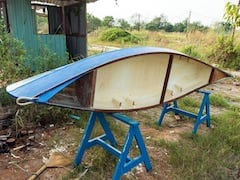
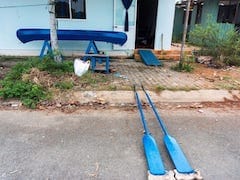
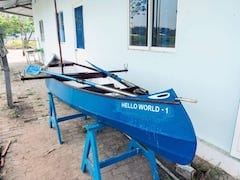
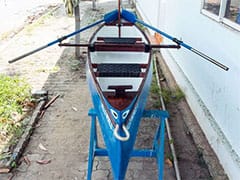
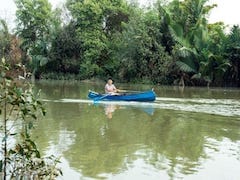
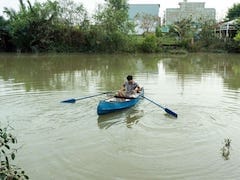
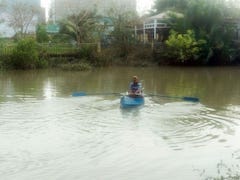
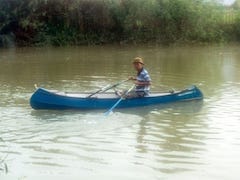
 ello World – 1 has been finished, and trials showed it’s an excellent boat for solo paddling, but there’s still much work to be done to make full use of the canoe. Various miscellaneous things: a raincoat to protect the hull from weather at docking, a pole to push the canoe forward in shallow water, also to mount a signal light for occasional night going, an apparent wind indicator (wind vane) to better observe wind condition, a hand pump to drain water out when it rains, an anchor to allow going fishing anywhere on the rivers around my area without having to find a tree or a buoy to attach the canoe to… Most important of all, I want to make a rowing kit: an outrigger with two flotation units to help stabilising the boat, and two long oars.
ello World – 1 has been finished, and trials showed it’s an excellent boat for solo paddling, but there’s still much work to be done to make full use of the canoe. Various miscellaneous things: a raincoat to protect the hull from weather at docking, a pole to push the canoe forward in shallow water, also to mount a signal light for occasional night going, an apparent wind indicator (wind vane) to better observe wind condition, a hand pump to drain water out when it rains, an anchor to allow going fishing anywhere on the rivers around my area without having to find a tree or a buoy to attach the canoe to… Most important of all, I want to make a rowing kit: an outrigger with two flotation units to help stabilising the boat, and two long oars.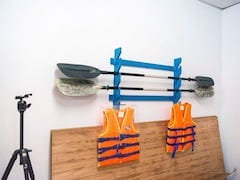
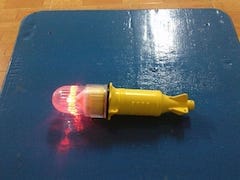
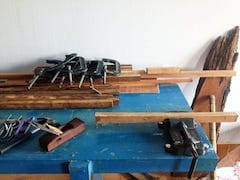
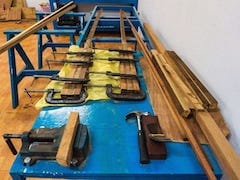
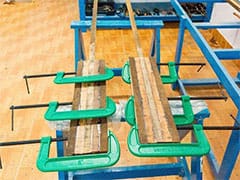
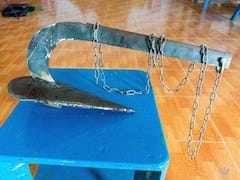
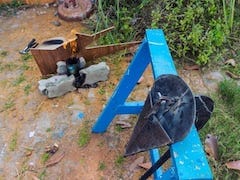
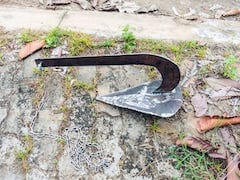
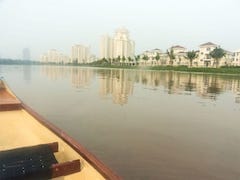
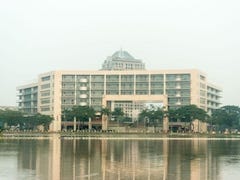
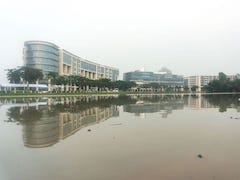
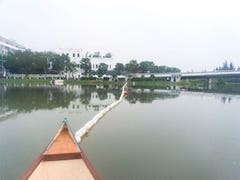
 was choosing a good day, and also waiting for the tide (it’s just after full moon and the water is low still), time seemed to be so long. Finally, christened, trialled the boat, and started its maiden voyage, all in this same day! 😀 First impressions: the boat is very agile, good speed, better than the plastic boats I used. It’s a real pleasure once you ride into, and the boat gets momentum after just a few paddling strokes, the feeling was light and firm. It tracks very straight, perhaps even too straight. On the minus sides: the canoe’s fat hull makes the turning angle a bit wide (it’s a bit difficult to turn quickly), and it’s somewhat shaky at times, probably because the seats are too high, maybe I should cut the seats’ legs down a bit to lower the center of gravity (or maybe not).
was choosing a good day, and also waiting for the tide (it’s just after full moon and the water is low still), time seemed to be so long. Finally, christened, trialled the boat, and started its maiden voyage, all in this same day! 😀 First impressions: the boat is very agile, good speed, better than the plastic boats I used. It’s a real pleasure once you ride into, and the boat gets momentum after just a few paddling strokes, the feeling was light and firm. It tracks very straight, perhaps even too straight. On the minus sides: the canoe’s fat hull makes the turning angle a bit wide (it’s a bit difficult to turn quickly), and it’s somewhat shaky at times, probably because the seats are too high, maybe I should cut the seats’ legs down a bit to lower the center of gravity (or maybe not).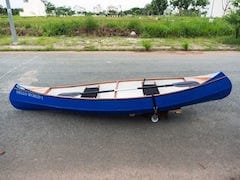
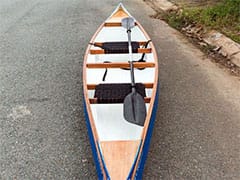
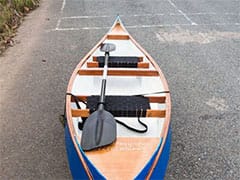
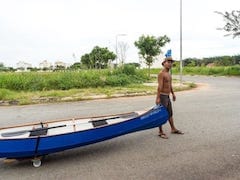
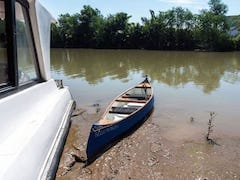
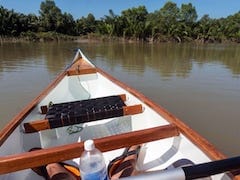
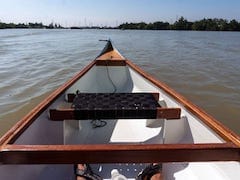
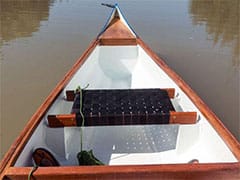
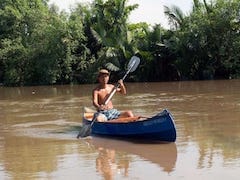
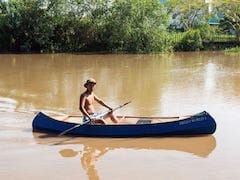
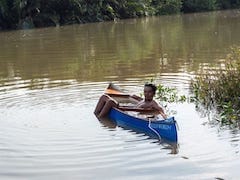
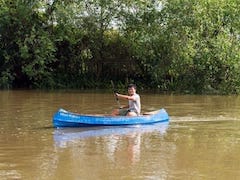
 he canoe construction has reached about 3/4 of the overall progress, but there’s still much work ahead. Lots of small errors and mistakes made here and there, lots of lessons learned, but I’m happy to see the general status of the canoe standing well. Since I’ve put more materials (epoxy, fiberglass, hard wood…) into the boat, its final weight might far exceed the projected 20 kg, but that’s not very important anyhow. If it’s too heavy to be easily carried on one’s back, I’ll make a simple carriage to help moving the thing (with my bicycle) around then! Although designed to be mostly a solo canoe, for now I see it can easily accommodate two persons and some little gears, making it a nice weekend fishing canoe very soon in the next 10 days or so! 😀.
he canoe construction has reached about 3/4 of the overall progress, but there’s still much work ahead. Lots of small errors and mistakes made here and there, lots of lessons learned, but I’m happy to see the general status of the canoe standing well. Since I’ve put more materials (epoxy, fiberglass, hard wood…) into the boat, its final weight might far exceed the projected 20 kg, but that’s not very important anyhow. If it’s too heavy to be easily carried on one’s back, I’ll make a simple carriage to help moving the thing (with my bicycle) around then! Although designed to be mostly a solo canoe, for now I see it can easily accommodate two persons and some little gears, making it a nice weekend fishing canoe very soon in the next 10 days or so! 😀.